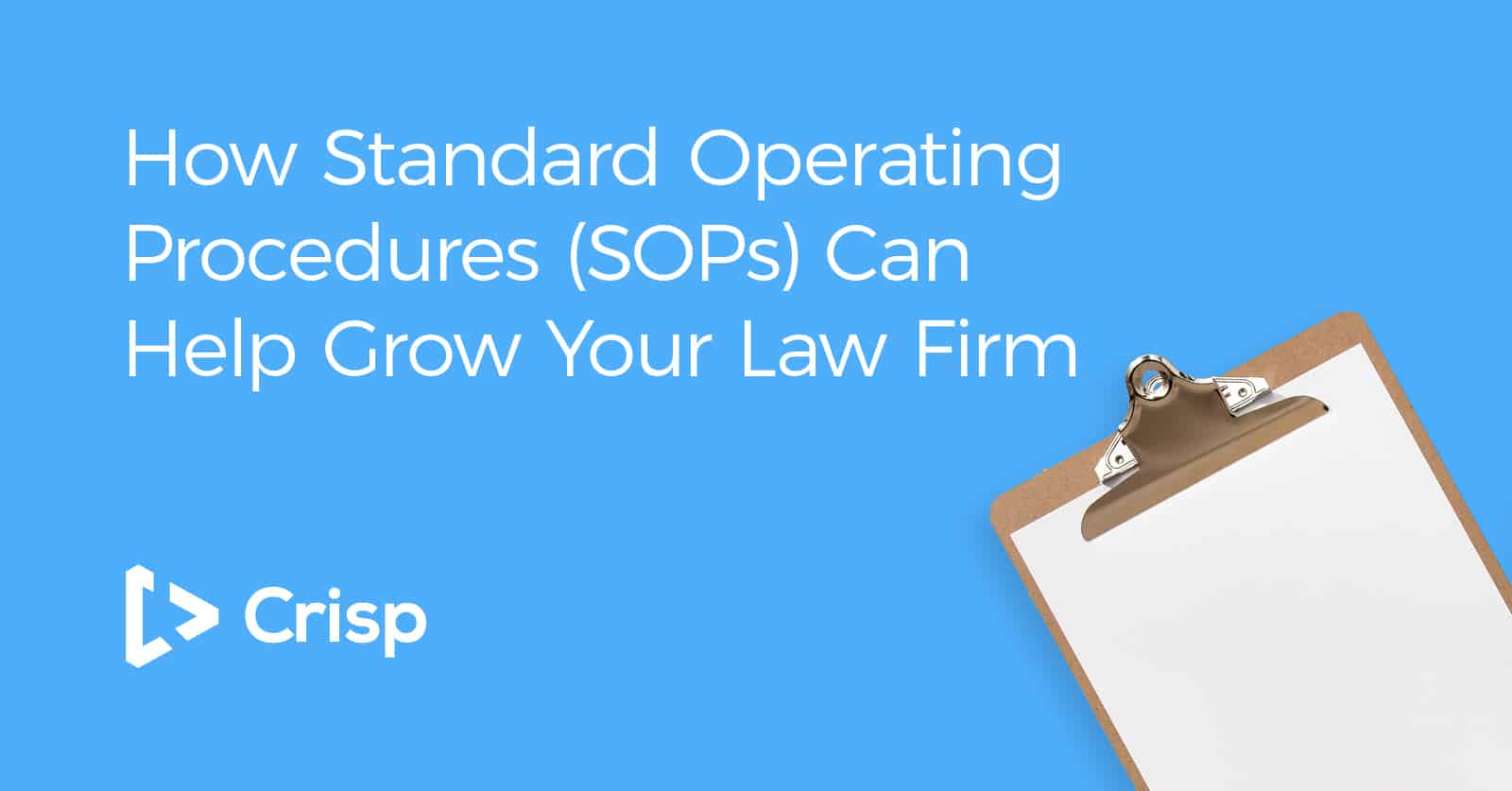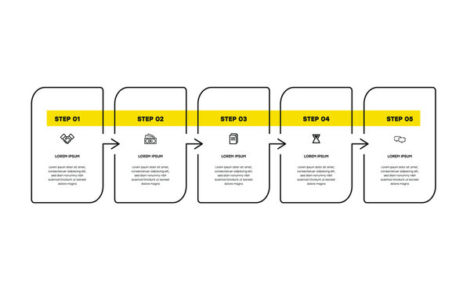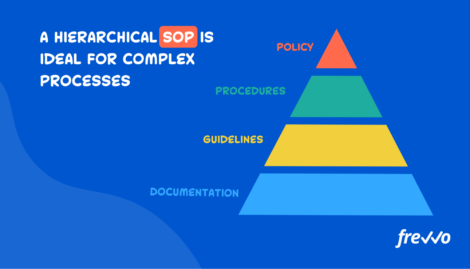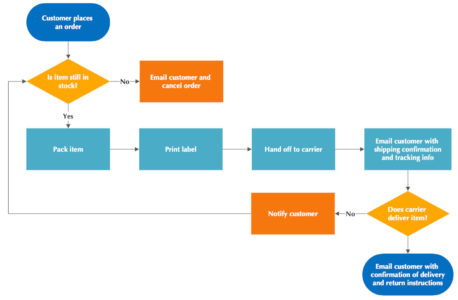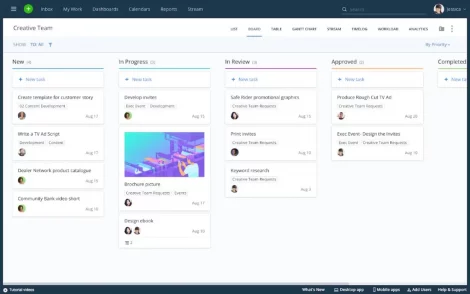Picture this:
You’re a committed law firm owner who’s already working more hours than you should. You’ve constantly got cases to manage, meetings to go attend, clients to speak with, a team to lead, payroll to run, billing to complete, supplies to order, and a life to live.
You need to scale yourself.
Even when you bring on new team members to take on specific functions in your law firm, you don’t have the time to sit down with them one on one and go over the inner workings of your firm, their roles, and your systems.
How can you expect them to be successful if they aren’t taught how to do things the right way?
This is where standard operating procedures, or SOPs, come in. As you grow, SOPs will be one of the most important aspects of your entire operation.
Not sure where to start? We’re here to help you.
In this guide, we’ll cover:
What are SOPs?
SOPs are step-by-step instructions put together by an organization to help team members carry out routine operations correctly and efficiently. Without them, no one would know where to begin, what to do, or how to do it the right way.
Without clear, up-to-date SOPs, it’s likely that you aren’t running your law firm in a consistent, efficient manner, which makes it hard to scale your organization effectively as you grow.
Simply put, SOPs make it easier to delegate the essential day-to-day tasks involved in running and growing your law firm and help buy back your time. Your team members can use SOPs to run your law firm the way you want, even when you are focused on other things.
There are many benefits of utilizing SOPs, but a just a few of them include:
- Reduced training time: The more resources and documentation a new hire has access to, the faster they’ll master their role and move up in the ranks of your law firm. This helps them become more productive for themselves as well as your firm.
- Improved efficiency: With clear, set directions, there’s much less room for error in all aspects of your firm. The more direction there is, the more efficient the work will be.
- Standardize client satisfaction: Keeping your clients happy shouldn’t be a shot in the dark. When you provide your team members with a proven formula for success when it comes to providing excellent service to new and existing clients, you’re automatically giving both parties a more positive, less frustrating experience.
- Create a structured environment: It’s frustrating to work in or run an office that’s never on the same page — so why would you run your law firm that way? SOPs help get your team members working toward the same common goal without veering off course.
Whether your law firm is brand new to the market, in the process of growing, or is an established market leader, developing SOPs will help it become the best version of itself.
For your law firm to run like a well-oiled machine, it’s worth it to put time and effort into creating SOPs for every key department and go over them with each team member who’s expected to follow them.
Which Areas of the Law Firm Need SOPs
Now that you understand what an SOP is, it’s time to learn where they’re most needed within your firm.
SOPs are needed in any department that has repeatable processes that are done the same each time. They can include, but are not limited to:
Case Management
For your law firm’s case management department, an effective set of standard operating procedures best covers the complete case process, from initial intake and case selection to handling legal documents, court appearances, and other milestone tasks. An effective SOP should also document client expectations and your law firm’s preferred workflow.
To ensure complete coverage of the case process, consider including Case Management SOPs such as:
- Document preparation
- Filing with the court
- Utilizing technology to streamline workflows
- Responding to inquiries from opposing counsel and clients
- Following up on any outstanding matters
By documenting these processes in a standardized way, you can ensure that each team member follows the same consistent procedure regardless of who is working on the case. This will help create a unified experience for clients and clear expectations on how your team should serve them.
Finance
The finance department is a great place to start when it comes to standardizing your law firm’s operations. This team is responsible for managing accounts receivable and accounts payable, handling credit card payments, preparing financial statements and reports, and maintaining accurate records of all financial transactions.
Creating SOPs for finance-related tasks can help streamline the workflow in your office, saving you time and money. Examples of finance processes to document are:
- Invoicing clients
- Processing payments, deposits, and withdrawals from bank accounts
- Reconciling credit cards
- Preparing financial statements
Standardizing these processes allows you to create consistency across the board while ensuring accuracy when managing your law firm’s finances.
Intake
If you’re looking to scale up your law firm, it’s essential to have SOPs in place for your intake department. These processes cover a potential client’s experience when they first contact your law firm and the subsequent steps for getting them on board as a client.
Having SOPs for intake can help ensure a consistent experience for all new clients, no matter which team member handles their intake.
You may want intake processes in place to:
- Ensure that all new intakes provide the same level of detail when contacting the firm.
- Guarantee intake specialists ask the same questions during their initial interview
- Have new clients sign the same documents when accepting services
- Ensure that any new hires get ramped up quickly to assist the team without slowing down the intake process
Marketing
Marketing is how you’re able to get the word out about your law firm. Without streamlined marketing SOPs, you will struggle to build a consistent brand, keep your law firm relevant online and offline, and bring in a predictable stream of new business.
Here are a few opportunities to put Marketing SOPs in place:
- Driving content creation and curation
- Tracking and reporting on marketing campaigns
- Managing lead generation activities
- Interacting with followers and clients on social media
- Determining which promotions to offer — and when
- Testing and rolling out new initiatives
- Assessing ROI on marketing initiatives and ensuring that those initiatives continue to support the firm’s overall objectives
Remember, this is just a limited list of departments where SOPs could improve the overall trajectory of your law firm. In order to really understand where SOPs are needed, take a close look at your firm’s performances over the past year. Where have you succeeded? Where have you struggled? Where is consistency lacking in your organization?
Once you know the answers to these questions, you can start figuring out where SOPs are needed within your organization and start from there.
How to Document SOPs
Documenting SOPs is a matter of detail and thoroughness. The most important thing to remember is to never assume that anyone knows anything. Whatever you think the first step is might not be obvious to someone without your deep knowledge of the business you have built. It’s important to keep that in mind when writing your SOPs and get more granular than you think you need to.
There are many ways to create SOPs, and every company chooses a different method that works best for them. In order to determine which one best reflects your law firm. Here are a few examples to begin:
Step-by-Step Instructions
If you go about using this method of documentation, it should be easy to read, understand, and perform for each and every team member. It should include how to begin the process, carry it out, and end it. Don’t forget to include any login information the user will need access to, such as usernames and passwords.
Hierarchical Format
There’s a slight difference between this kind of documentation and the previous one, and that’s simply that hierarchical SOPs provide additional details within each step as deemed necessary. While a purely step-by-step SOP will list steps 1, 2, 3, and so forth, a hierarchical SOP may include Steps 1a and 1b; 2a, 2b, and 2c; 3a and 3b.
The hierarchical format is used when more detailed instruction may be required in order to successfully complete a task.
Flowchart Format
Flowcharts are best used to illustrate SOPs when multiple outcomes are possible at certain points throughout the process. Each subsequent step depends on the outcome of the previous step — and it simply wouldn’t be logical to follow certain paths if a contrasting outcome were to come about.
For example, when speaking with a potential client, a flowchart could be useful for when they immediately agree to work with you versus when they don’t (and thus require more follow-up). Your team member will act accordingly in any situation based on the SOP they’re working with.
These are just a few examples, and using what’s best for your law firm is up to you.
Where to House SOPs
Now that you know all the ins and outs of what SOPs are, where they’re needed, and how to document them — where are you supposed to keep them? How will your team access them?
Here are a few ideas to start with:
Paper Copy
A tried and true classic, paper manuals are one of the oldest and most popular ways to keep and distribute important processes and procedures within a business setting.
The most notable advantage of this method is that it’s inexpensive, especially for a growing law firm with one or a handful of locations and a handful of staff. It also means staff members will have a hard copy to which they can refer at any time.
On the downside, a paper copy can be lost or misplaced and is not environmentally friendly. It can also be inconvenient for SOPs with many pages or complex instructions such as flowcharts. Finally, in an industry that is changing quickly, keeping your standard operating procedures updated will be more laborious if you house them this way.
Email Distribution
A law firm can distribute SOPs to team members conveniently and quickly via email simply because everyone who works there will likely have a company email address. This method is the most cost-effective and ensures quick delivery. It also provides a copy for every member who needs one and will be available for them to refer to when needed.
The only problem with SOP distribution by email is that some members may not read the attachments thoroughly, technology updates may create broken links over time, and with so much communication happening via email the documentation may get lost in their inboxes.
Cloud-Based Document Storage
A firm with multiple departments or locations can use cloud-based document storage and distribution channels to house SOPs. Tools such as Google Cloud and Microsoft SharePoint are popular among small and growing businesses for storing and sharing documents virtually.
Housing your law firm’s SOPs online can be as simple as a Google Drive folder with a Google Doc for each process, or as complex as a custom-built internal website. Cloud-based tools typically have automation features that make distributing and updating SOPs easy and fast, and with everyone accessing the same version, processes and procedures will be simple to update over time.
Special Software Options
A law firm can use various software options to distribute and manage its SOPs. Some of the most popular software a growing firm can use to create, manage, and distribute SOPs include Wrike, Igloo, Confluence, Nuxeo, WorkZone, Box, and more.
While these could prove to be effective, you might want to consider the pricing options before opting into one as they may or may not fit within your law firm’s budget.
As usual, it’s important to explore options and determine what best fits the unique needs of your law firm.
Final Thoughts
Running and growing a growing law firm doesn’t have to be a demanding full-time job that requires the owner to micromanage every team member — or worse, trying to do everything themselves.
By creating SOPs for various departments, you can ensure smooth operations and guarantee scalability without compromising your firm’s values and culture.
If you’re ready to get started standardizing your processes and growing your law firm, let us be the ones to help you do it. Crisp Coach is a closed-door community of the highest-performing law firms, and yours could be the next one.
What do you say? Are you ready to run the most efficient law firm in the industry?
Let’s do this — together.

